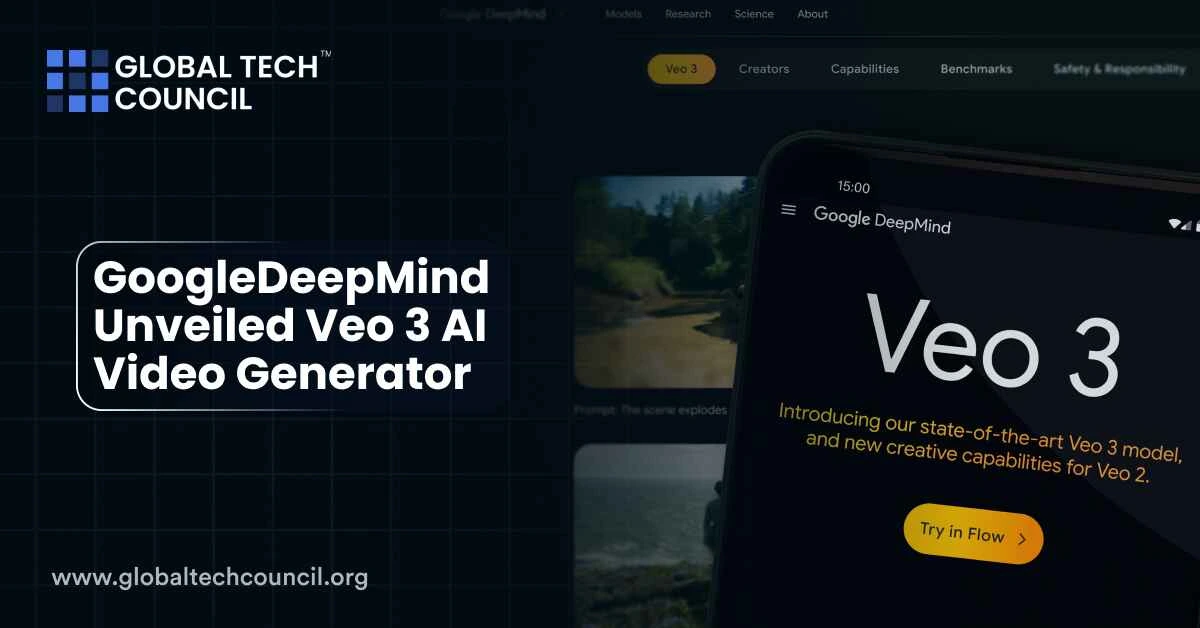
GoogleDeepMind has launched Veo 3, a powerful AI video generator that turns simple text into high-quality videos with sound. It creates visuals that match your prompt and adds native audio like speech, music, and ambient noise. This makes it easier than ever to create video content — whether you’re a creator, teacher, or developer.
Veo 3 is faster, sharper, and smarter than its earlier versions and now directly competes with tools like Sora, Runway, and Pika. Let’s break down how it works, who it’s for, and what makes it different.
What is Veo 3?
Veo 3 is GoogleDeepMind’s latest AI model designed to generate full videos from a text prompt. You can describe a scene, action, or dialogue — and Veo 3 turns it into a video complete with matching audio.
It’s built with Google’s Flow and Gemini platforms in mind, meaning users can access it through the Gemini app, Vertex AI, and even upcoming integrations in Workspace.
What Makes Veo 3 Unique?
Compared to earlier video models, Veo 3 offers much more:
- Generates high-res video (up to 1080p+)
- Adds synchronized voice, music, and effects
- Understands natural and complex prompts better
- Creates multi-scene shots in a single pass
- Faster generation with tighter frame consistency
These features make it one of the most versatile AI video generators yet.
Key Features of Veo 3
| Feature | What It Means |
| Native Audio Support | Adds voices, sound effects, and background audio to each scene |
| High-Resolution Output | Generates clear, professional-looking visuals up to 4K quality |
| Scene Transitions | Supports smooth multi-shot sequences within one prompt |
| Prompt Precision | Responds accurately to detailed descriptions and dialogue |
| App Integration | Available inside Gemini and Vertex AI |
Use Cases Across Industries
Veo 3 is built to solve content creation needs in real scenarios:
For Content Creators
- Make social reels or YouTube shorts from text
- Add background music and effects automatically
For Teachers and Coaches
- Create explainer videos with voiceovers
- Turn lessons into animated visual stories
For Developers
- Prototype apps or games with visual feedback
- Build storytelling sequences with code and prompts
For Businesses
- Generate promotional or training videos
- Make quick edits for product demos or marketing assets
Veo 3 vs Other AI Video Models
To understand where Veo 3 stands, here’s how it stacks up against its top competitors:
| Tool | Developer | Strengths |
| Veo 3 | GoogleDeepMind | Real-time audio-video sync, high resolution, scene transitions |
| Sora | OpenAI | Long-form visual generation, smooth motion |
| Runway Gen-3 | Runway | Human realism, background control, creative editing |
| Pika Labs | Pika | Motion dynamics, easy camera movement prompts |
How to Access Veo 3?
Veo 3 is available through the Gemini app and Vertex AI. Early access is rolling out to users with Google’s Ultra plan, and wider availability is expected soon. No third-party tools are needed — it works directly from Google’s platforms.
Because it works with other AI tools like Imagen 4 (for visuals) and Gemini (for scriptwriting), teams can use Veo 3 in a full AI-powered video pipeline.
If you’re planning to use Veo 3 in your projects, it’s a good idea to build foundational knowledge through a Deep Tech certification. This gives you clarity on how these tools work and how to get the most out of them.
For marketing teams and business builders, a Marketing and Business Certification adds practical frameworks to apply Veo 3 in campaigns. And for those working with analytics and automation, pairing it with a Data Science Certification gives structure to AI content workflows.
Final Thoughts
Veo 3 is a leap in AI video technology. It makes it possible to generate full audio-visual content in minutes — no camera, mic, or video editing needed. From creators and marketers to educators and engineers, this tool opens new creative doors.
And since it’s part of Google’s broader AI stack, Veo 3 is easy to access, use, and scale inside tools people already rely on every day.